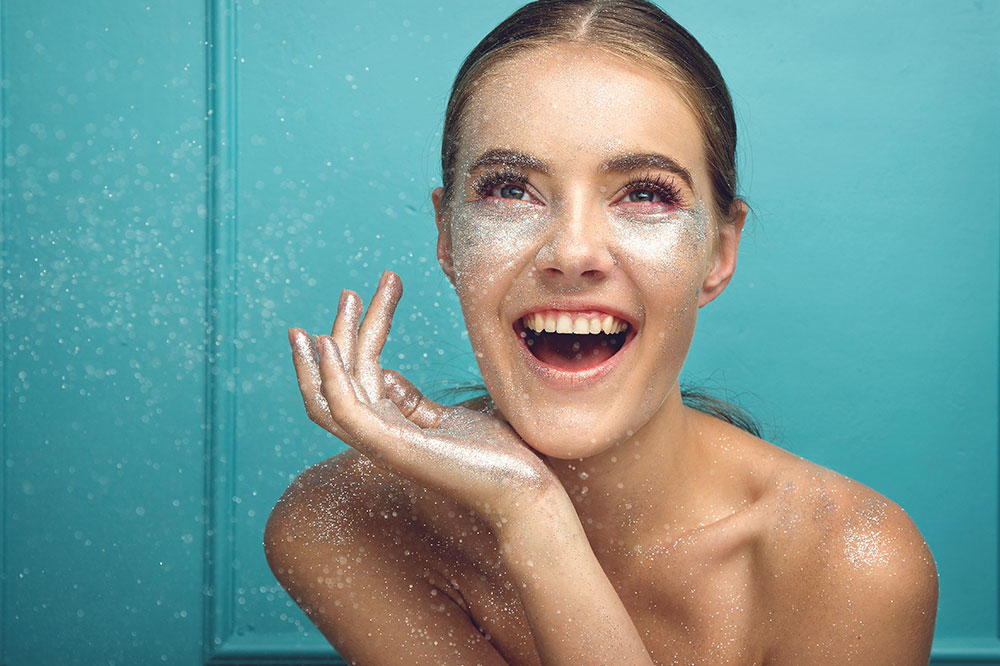
14 Tips for Naturally Sparkling Eyes
No matter your age, your eyes are the most expressive part of your face. They are often perceived as a reflection of your health and mood. The contrast between the color of your iris and its white backdrop grants your eyes a sense of brightness, excitement, and health. Taking good care of your eyes can highlight this contrast and make your eyes sparkle. So, here are ten tips that may help do the same:
Avoid prolonged exposure to dry air
Air can be arid in high altitudes, in deserted climates, and on airplanes. It is essential to avoid these areas or use a humidifier when possible. You can also be exposed to dry air when riding a motorcycle or using hair dryers or car heaters that blow wind directly into your eyes. Avoiding prolonged exposure to dry air and keeping yourself hydrated can prevent your eyes from getting itchy and red.
Use green tea bags
Placing cooled green tea bags on your eyelids can help you reduce swelling and discomfort, mainly if you deal with puffy or irritated eyes. This is because of polyphenols like Epigallocatechin gallate (EGCG), which has anti-inflammatory and antioxidant effects on the cornea. To derive the most benefits out of them, steep the tea bags in warm water. Remove and let them cool completely, or place them in the refrigerator for 15 minutes. Once chilled, place them on your eyelids for 10 minutes.
Eat eye-healthy foods
Certain foods can promote their health and make them appear brighter. Consider the following recommendations to adapt to your daily food intake:
Consuming Omega-3 and Omega-6 fatty acids
Omega-3 and omega-6 fatty acids can help you fight dry eye syndrome. Good sources of these fatty acids include mackerel, salmon, sardines, walnuts, chia seeds, and flaxseeds.
Eating more fruits and vegetables
Fruits and vegetables are essential for vitamins, minerals, and antioxidants. Dark leafy greens like kale, spinach, and Brussels sprouts contain lutein and zeaxanthin, which protect the eyes against eye damage. Berries, carrots, and oranges are also healthy sources of antioxidants and vitamins to boost eye health.
Avoid salty foods
Too much salt can increase water retention in the body, which may cause the eyes to appear puffy. Healthy adults should limit their sodium intake to 2,300 milligrams (or less than one teaspoon) daily.
Stay hydrated
Staying hydrated is essential for all your regular body functions. It also makes your skin appear moisturized and ensures your eyes have enough water to remain lubricated and hydrated. Be sure to drink plenty of water throughout the day to keep your eyes healthy and bright.
Try rose water
According to certain studies, rose water has anti-inflammatory and anti-infective effects, which can benefit our eyes. It is a popular traditional remedy in many cultures to eliminate dull eyes. To apply rose water, pour some on a cotton pad, and apply it to the area to reduce puffiness and swelling. To compound its cooling effects, store the rose water in a refrigerator. If you are unsure whether rose water is safe, speak with your doctor before applying.
Use cucumbers to de-puff
Cucumbers contain antioxidant and anti-inflammatory properties, which can help you soothe your eyes and de-puff them. Cut two thick cucumber slices and place them on your eyes for 15 minutes to refresh your skin and eyes. Doing this every week will reduce the appearance of fine lines and dark circles.
Massage your eyes regularly
Eye massages can aid in lymphatic drainage and improve blood circulation around the area. It can also soften wrinkles, diminish fatigue, and help you de-puff your eyes. To do an eye massage, follow these simple steps:
- Rub your palms together to make them warm, and then place them on your eyes for a few seconds.
- Using the fingertips on your index and middle fingers, gently tap circles around your eyes to improve blood circulation.
- Starting from your eyebrows, lightly move your fingertips towards the edge of your eyes and back towards your nose. Circle your eyes three times with your fingertips.
- Press upwards on either side of your nose using your middle finger, just below the brow bone. Repeat this process near your tear ducts as well.
- Remember to use light pressure throughout to avoid dragging your skin too much.
- Repeat this a few times to relieve pressure and de-puff your eyes.
Prioritize sleep quality
Missing out on quality sleep is bound to result in tiredness and fatigue. This can dull the shine of your eyes. Try to get at least 7-9 hours of sleep. To improve your sleep quality, keep your electronic devices away well before bedtime, as exposure to artificial light can disturb your natural sleep cycle. When sleeping, try to keep your head elevated to prevent fluid retention around the eyes.
Shield your eyes from the sun
Protecting your eyes from the sun can help prevent damage from UV rays and keep them hydrated. For example, consider using wraparound sunglasses with UV protection when you are out and about in the sun, or add safety shields to your regular sunglasses for additional wind and sun protection.
Give your eyes a break
If you spend long hours in front of a screen, it may be wise to give your eyes a break often. Focusing on one area for too long can cause your eyes to become dry and tired. Take a 20-second break for your eyes where you close your eyes or blink rapidly after every 20 minutes of visual concentration.
Use eye drops or artificial tears to hydrate
With age, dry eyes tend to become more common. If you feel that your eyes become dry and irritated often, eye drops or artificial tears may help. They generally contain humectants that help retain moisture, lubricants, and electrolytes to boost your eyes’ health and make them appear brighter!


